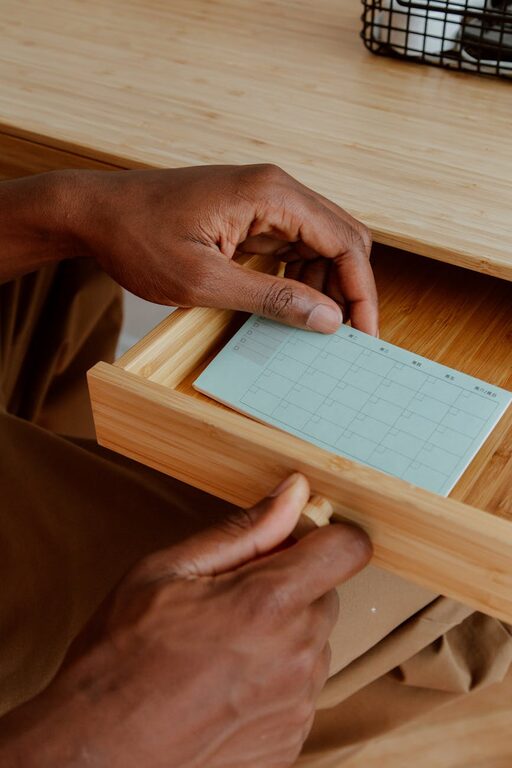
Paper clutter is a common challenge in many households. Bills, receipts, school papers, mail, and countless other documents tend to pile up quickly, creating a messy environment and making it difficult to find important papers when you need them. Fortunately, reducing paper clutter doesn’t have to be overwhelming. With some simple habits and practical solutions, you can regain control over your papers and enjoy a tidier living space.
In this post, we’ll explore straightforward ways to reduce household paper clutter effectively.
Why Reducing Paper Clutter Matters
Before diving into tips, it’s helpful to understand why managing paper clutter is beneficial. Paper piles can:
– Increase stress and anxiety by creating visual chaos
– Make it harder to locate important documents quickly
– Take up valuable space around your home
– Contribute to inefficient use of time
By reducing paper clutter, you can improve your home’s organization, save time, and create a more peaceful environment.
1. Sort and Purge Regularly
The first step to tackling paper clutter is to sort through your papers and decide what to keep, recycle, or shred.
Steps to Sort Effectively:
– Gather all papers in one spot: Collect papers from mail trays, desks, counters, and drawers.
– Create sorting piles: Make categories like bills to pay, important documents, receipts, junk mail, and items to shred.
– Be ruthless: Recycle or shred anything you don’t need. For example, expired coupons, outdated manuals, and junk mail can usually be discarded immediately.
– File what’s essential: Keep necessary documents like tax papers, warranties, and insurance policies in a labeled file folder.
Schedule this sorting session monthly or quarterly to keep paper buildup under control.
2. Go Digital Wherever Possible
One of the best ways to reduce physical paper is to switch to digital versions.
Ideas to Digitize Your Paper:
– Opt for e-bills and statements: Contact your service providers to receive bills and bank statements electronically.
– Use scanning apps: Use your smartphone’s scanning apps to turn paper documents into digital files. Apps like Adobe Scan or CamScanner are useful.
– Store files securely: Use cloud storage services or external hard drives to organize and back up digital files.
– Organize digital folders: Create clear folder structures (e.g., “Taxes,” “Receipts,” “Medical Records”) to easily locate documents.
Going paperless reduces clutter and allows quick access to documents when needed.
3. Create a Dedicated Paper Station
Having a designated space for managing papers can prevent stacks from spreading throughout your home.
Setting Up Your Paper Station:
– Choose a spot: Pick a convenient location like a desk or countertop area.
– Use organizers: Use trays, file folders, or bins labeled as “Incoming,” “To File,” and “To Do.”
– Limit the space: By restricting paper storage to one area, you force yourself to process papers regularly instead of letting them pile up.
– Keep necessary supplies: Have a shredder, recycling bin, pens, and sticky notes on hand for quick sorting.
This station will make it easier to stay on top of paperwork.
4. Develop Simple Daily Habits
Small daily habits can prevent paper clutter from building up again.
Daily Paper Management Tips:
– Deal with mail immediately: Open and sort mail as soon as it arrives to decide what to keep or toss.
– File documents right away: Avoid piling papers on your desk; put them in the correct folder after use.
– Set reminders: Use your phone or calendar to remind yourself to review and purge files monthly.
– Encourage household members to follow suit: Establish shared routines if others receive mail or handle papers in the household.
Consistency keeps clutter at bay.
5. Limit Incoming Paper
Reducing the amount of paper entering your home is essential in minimizing clutter.
How to Reduce Incoming Paper:
– Unsubscribe from junk mail: Use online services or request removal from mailing lists to stop receiving unwanted catalogs and ads.
– Choose digital receipts: When shopping, ask for email receipts instead of paper ones.
– Go paperless for memberships and subscriptions: Use digital options whenever possible.
– Communicate your preferences: Notify friends, family, and organizations that you prefer digital communication when applicable.
Fewer papers entering your home means less to manage.
6. Organize and Store Important Documents Properly
Keeping important documents safe and organized helps prevent clutter and protects your valuables.
Tips for Organizing Important Papers:
– Use a filing system: Choose folders or binders labeled by category, such as “Medical,” “Finance,” or “School.”
– Opt for a fireproof box or safe: Store original birth certificates, passports, and other irreplaceable documents securely.
– Keep backups: Consider digital copies for key papers stored in secure cloud storage.
– Limit the amount kept: Only keep originals and records as long as necessary according to guidelines (for example, tax documents often should be kept for seven years).
Proper storage makes papers easier to find and reduces stress.
7. Shred Sensitive Documents Promptly
Prevent identity theft and unnecessary clutter by shredding sensitive papers you no longer need.
When to Shred:
– Old bills containing personal details
– Bank statements past their retention period
– Credit card offers and pre-approved applications
– Personal correspondence that’s no longer needed
Keep a shredder near your paper station for quick disposal.
Conclusion
Reducing household paper clutter is achievable through simple, consistent practices. Sorting and purging regularly, embracing digital alternatives, creating a designated paper management space, and limiting incoming paper all help maintain a neat home. By taking control of your papers, you’ll enjoy a more organized, efficient, and peaceful living environment.
Start with one or two tips today and build momentum toward a clutter-free household!
